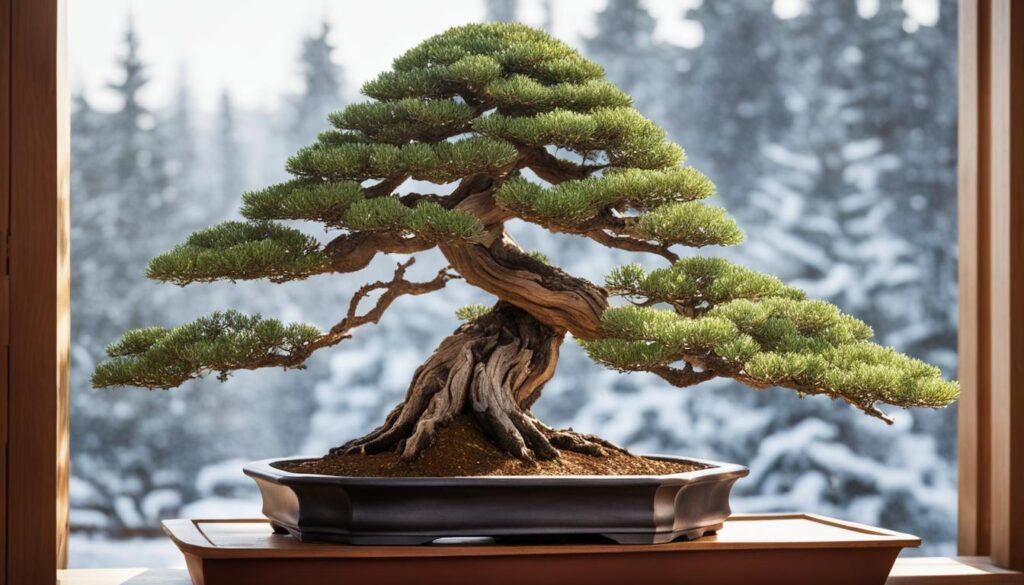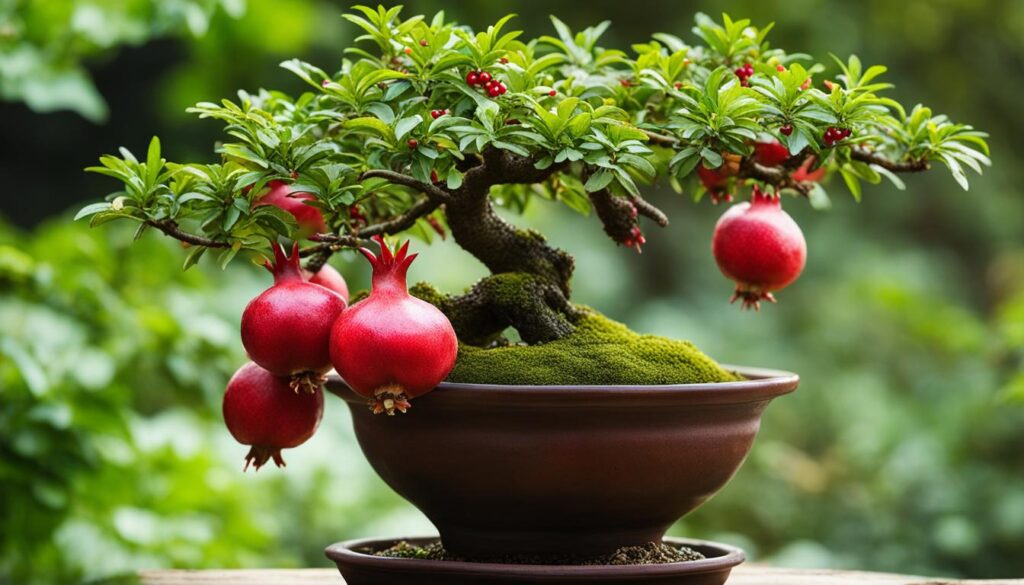Unlike regular Christmas trees, bonsai Christmas trees are miniaturized versions that can be displayed indoors, making them ideal for small living spaces or as captivating tabletop centerpieces. With their intricate forms and delicate foliage, bonsai Christmas trees are truly a decorative masterpiece that adds a touch of nature to your holiday celebrations.
In this comprehensive guide, we will take you through every aspect of caring for your bonsai Christmas tree, from selecting the right tree to mastering watering techniques, fertilizing, pruning, and wiring. Whether you’re a seasoned bonsai enthusiast or just starting with bonsai care, this guide will equip you with the knowledge and skills to nurture and maintain a thriving bonsai Christmas tree throughout the holiday season and beyond.
Key Takeaways
ToggleIntroducing the Unique Charm of Bonsai Christmas Trees
Bonsai trees have a rich history dating back thousands of years, originating in China and gaining popularity in Japan. Unlike traditional Christmas trees, bonsai trees are not a specific type of tree but a style of horticulture. They are trained to remain small in size while exhibiting unique and artistic forms.
Bonsai Christmas trees bring a fresh and distinctive look to holiday decorations, transforming the way we celebrate the season. By incorporating the beauty of nature and the artistry of bonsai, these mini Christmas trees create a sense of tranquility and wonder during the festive period.
Selecting the Right Tree for Your Bonsai Christmas Tree
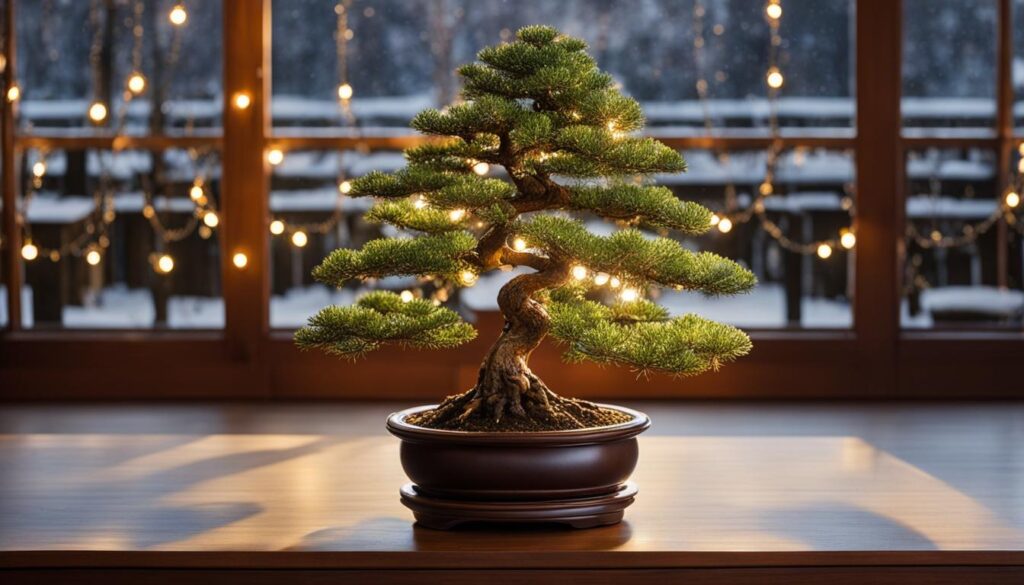
Choosing the right tree is crucial for creating a stunning bonsai Christmas tree. While many tree species can be used, there are certain characteristics to consider. Factors such as size, foliage type, growth pattern, and suitability for indoor cultivation play a significant role in selecting the perfect tree. Whether you prefer evergreen trees like spruce or fir, or deciduous varieties like maple or elm, each tree has its own unique qualities and care requirements. In this section, we will explore different tree species and provide insights on selecting the ideal tree for your bonsai Christmas tree.
When choosing a tree for your bonsai Christmas tree, consider the following:
- Size: Decide if you prefer a mini Christmas tree that can fit on your tabletop or a slightly larger indoor bonsai tree that can become a focal point in your living space.
- Foliage Type: Choose between evergreen trees with year-round green foliage or deciduous trees that change their leaves with the seasons.
- Growth Pattern: Consider the growth pattern of the tree, whether you want a tree with cascading branches or an upright form.
- Suitability for Indoor Cultivation: Ensure that the tree you choose is suitable for growing indoors and can thrive in the conditions of your home or office.
Here are some popular tree species for bonsai Christmas trees:
Optimal Placement and Sunlight Requirements

The proper placement of your bonsai Christmas tree is essential for its growth and overall well-being. In addition to placement, providing the right amount of sunlight is crucial. Bonsai trees require a delicate balance between sunlight and shade to thrive. Understanding the sunlight requirements for different tree species will help you create the optimal environment for your indoor bonsai tree to flourish.
When considering the placement of your bonsai Christmas tree, keep in mind the following guidelines:
- Choose an area in your home that receives bright, indirect sunlight. Direct sunlight can be too intense and may scorch the leaves.
- Avoid placing your bonsai tree near drafty windows, as the constant exposure to cold air can harm the tree.
- Ensure the location offers consistent temperature and humidity levels, as extreme fluctuations can stress the tree.
It’s important to note that different tree species have varying sunlight requirements. Some bonsai trees, such as junipers, thrive in full sun, while others, like ficus trees, prefer partial shade. Research the specific sunlight needs of your chosen bonsai tree and adjust the placement accordingly.
Proper air circulation is also vital for the health of your bonsai Christmas tree. Adequate air movement prevents the growth of fungi and promotes healthy transpiration. Avoid placing your bonsai tree in stagnant areas or near heat sources that may dry out the foliage.
By providing the optimal placement and meeting the sunlight requirements of your bonsai Christmas tree, you will create a favorable environment for its growth and ensure its longevity.
Top 10 fastest growing bonsai every beginner should try >>>
Mastering the Watering Techniques for Your Indoor Bonsai Tree
Proper watering is crucial for the health and vitality of your indoor bonsai Christmas tree. Achieving the right balance of moisture is essential, as both overwatering and underwatering can have detrimental effects on the tree’s well-being. Each tree species has its own specific watering needs, influenced by factors such as temperature, humidity, and soil composition.
In this section, we will explore different watering techniques and provide expert advice on how to determine when and how much to water your bonsai Christmas tree to ensure its long-term success.
When it comes to watering your indoor bonsai tree, it’s important to find the right balance. Overwatering can lead to root rot and other fungal diseases, while underwatering can cause the tree to dry out and eventually die. To ensure your bonsai Christmas tree receives the optimal amount of water, here are some watering techniques to follow:
- Check the soil moisture: Before watering, check the moisture level of the soil by inserting your finger about an inch deep. If it feels dry, it’s time to water the tree. If it still feels slightly moist, wait for a day or two before watering.
- Watering methods: There are two common methods for watering bonsai trees: immersion and top watering. Immersion involves placing the pot in a basin of water and allowing the soil to soak up moisture from the bottom. Top watering involves gently pouring water onto the soil surface, ensuring that it reaches the roots.
- Watering frequency: The frequency of watering depends on various factors such as the tree species, pot size, temperature, and humidity. As a general rule, it’s better to underwater than overwater. Monitor your bonsai tree regularly and adjust the watering frequency accordingly.
- Spraying the foliage: In addition to watering the soil, it’s beneficial to occasionally mist the foliage of your bonsai Christmas tree. This helps increase humidity and prevents the leaves from drying out.
- Drainage: Good drainage is essential to prevent waterlogging. Ensure the bonsai tree’s pot has drainage holes and is placed on a drip tray or saucer to catch excess water.
By following these watering techniques, you can ensure that your indoor bonsai Christmas tree receives the right amount of moisture for healthy growth. Remember to always observe your tree’s specific needs and make adjustments as necessary. With proper watering, your bonsai Christmas tree will thrive and bring joy throughout the holiday season and beyond.
Fertilizing: Providing Nutrients for a Thriving Christmas Bonsai Tree
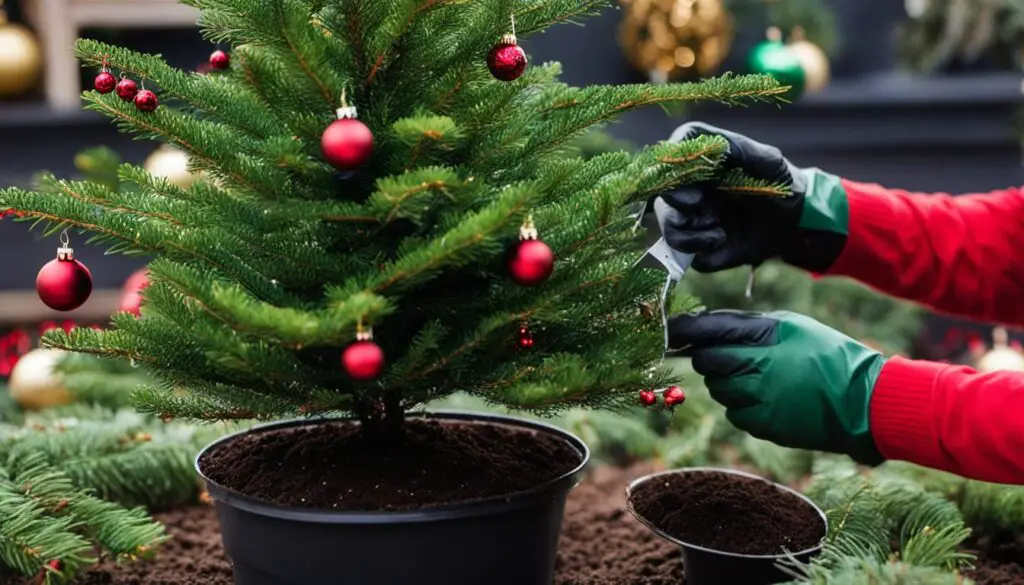
Fertilizing is an essential aspect of bonsai care, providing the necessary nutrients for your Christmas bonsai tree’s growth and development. Just like any other plant, bonsai trees require a balanced diet of essential minerals to stay healthy and vibrant. By understanding the different types of fertilizers, their nutrient composition, and the appropriate application methods, you can ensure your bonsai Christmas tree receives the optimal nutrition it needs to thrive.
When it comes to fertilizing your bonsai Christmas tree, it’s important to consider the specific requirements of your tree species. Different trees have varying nutrient needs and may benefit from specific fertilizer formulations. For example, an evergreen indoor bonsai tree may require a fertilizer with higher nitrogen levels to support vigorous growth and lush foliage, while a deciduous bonsai tree may benefit from a balanced fertilizer that promotes overall health and resilience.
Applying fertilizers at the right time is crucial to maximize their effectiveness. Generally, bonsai trees should be fertilized during the growing season, which is usually in spring and summer. However, it’s important to research and understand the specific feeding schedule for your particular tree species, as some may have different requirements.
There are different types of fertilizers available, including liquid fertilizers, granular fertilizers, and organic fertilizers. Liquid fertilizers are easily absorbed by the bonsai tree’s roots and provide immediate nutrients. Granular fertilizers release nutrients slowly over time, ensuring a steady supply of nourishment. Organic fertilizers, such as compost or fish emulsion, are derived from natural sources and help improve the overall soil health.
When applying fertilizer to your bonsai Christmas tree, it’s essential to follow the manufacturer’s instructions regarding dosage and frequency. Overfertilizing can lead to nutrient burn and damage the tree’s delicate root system, while underfertilizing can result in stunted growth and weak foliage. Remember to water your bonsai tree thoroughly before fertilizing, as this will help prevent the roots from getting burned by concentrated fertilizer.
TIP: It’s a good practice to occasionally flush the soil of your bonsai Christmas tree to remove any built-up salts and ensure optimal nutrient absorption. To do this, water your bonsai tree with plain water until it flows out from the drainage holes at the bottom of the pot.
By providing the right nutrients through proper fertilization, you can ensure that your Christmas bonsai tree remains healthy, vibrant, and ready to impress during the holiday season. Keep in mind that fertilizing is just one aspect of bonsai care, and it should be combined with other practices like proper watering, pruning, and placement to create the perfect environment for your indoor bonsai tree.
Pruning and Wiring: Crafting the Perfect Mini Christmas Tree Shape
To achieve the distinctive form and aesthetics of a bonsai Christmas tree, pruning and wiring techniques are essential. These methods allow you to shape and maintain the desired look, ensuring your mini Christmas tree captures attention and admiration.
Pruning plays a vital role in controlling the growth and shape of your bonsai Christmas tree. By selectively removing branches and foliage, you can create a compact and well-balanced tree. Start by identifying branches that detract from the desired shape and carefully trim them using sharp bonsai pruning shears. Remember to maintain the proportions and maintain a natural appearance throughout the pruning process.
Wiring is another crucial technique that enables precise manipulation of branches and foliage. By gently wrapping wire around the branches, you can guide them into the desired position. To avoid damaging the tree, ensure the wire is not too tight and regularly check for any signs of wire cutting into the bark. Once the branches have set into the desired shape, you can remove the wire to allow the tree to continue growing naturally.
It’s important to note that pruning and wiring should be done with careful consideration and patience. Always consult bonsai-specific resources or seek guidance from experienced bonsai enthusiasts to ensure you employ proper techniques suitable for your bonsai Christmas tree. With practice and attention to detail, you will master the art of pruning and wiring, creating a captivating and visually appealing miniature Christmas tree that will be the highlight of your holiday decor.
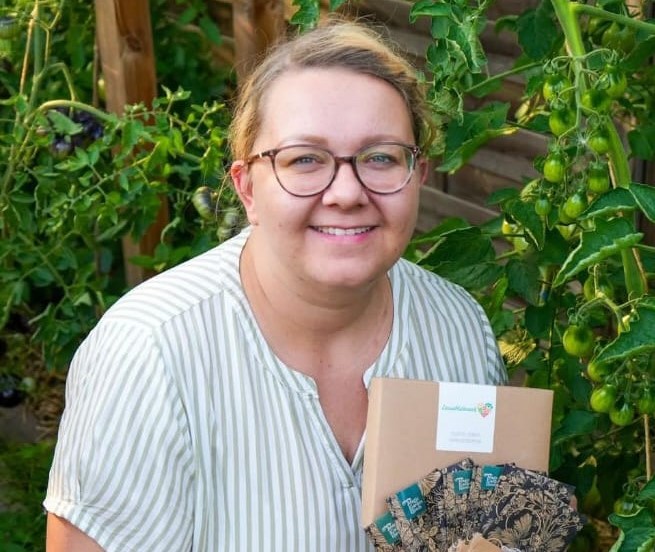
Karen Phillips, Bonsai expert and blogger. Read more about me here

